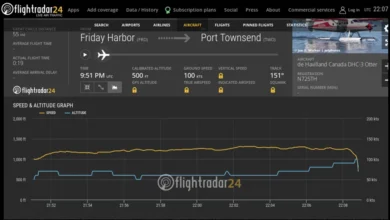475 Carbon Capture Lobbyists Attending COP28 • Watts Up With That?

Essay by Eric Worrall
h/t Dr. Willie Soon; The Lake Nyos disaster demonstrated an uncontrolled urban release of concentrated CO2 has the potential to kill millions of people. But this risk doesn’t seem to bother companies chasing funding.
At least 475 carbon-capture lobbyists attending Cop28
Exclusive: Figures reveal growing push by fossil fuel sector for technologies that scientists say will not stop global heating
Nina Lakhani in Dubai @ninalakhaniFri 8 Dec 2023 23.33 AEDT
Cop28 organisers granted attendance to at least 475 lobbyists working on carbon capture and storage (CCS), unproven technologies that climate scientists say will not curtail global heating, the Guardian can reveal.
The figure was calculated by the Centre for Environmental Law (Ciel) and shared exclusively with the Guardian, and is the first attempt to monitor the growing influence of the CCS subset of the fossil fuel industry within the UN climate talks.
CCS, or CCUS (which includes “utilisation”) is being pushed hard at the summit by fossil fuel and other high-pollution industries, as well as by the biggest greenhouse gas emitting countries. CCS backers say the technologies will enable polluters to trap carbon dioxide emissions and bury them under the ground or the seabed, or use the CO2 in the production of fuels or fertilisers.
…
The Lake Nyos disaster has shown us what an uncontrolled release of concentrated CO2 can do to the surrounding area.
Lake Nyos disaster, Cameroon, 1986: the medical effects of large scale emission of carbon dioxide?
P. J. Baxter, M. Kapila, and D. Mfonfu
Abstract
Carbon dioxide was blamed for the deaths of around 1700 people in Cameroon, west Africa, in 1986 when a massive release of gas occurred from Lake Nyos, a volcanic crater lake. The clinical findings in 845 survivors seen at or admitted to hospital were compatible with exposure to an asphyxiant gas. Rescuers noted cutaneous erythema and bullae on an unknown proportion of corpses and 161 (19%) survivors treated in hospital; though these lesions were initially believed to be burns from acidic gases, further investigation suggested that they were associated with coma states caused by exposure to carbon dioxide in air. The disaster at Lake Nyos and a similar event at Lake Monoun, Cameroon, two years previously provide new information on the possible medical effects of large scale emissions of carbon dioxide, though the presence of other toxic factors in these gas releases cannot be excluded.
Read more: https://www.ncbi.nlm.nih.gov/pmc/articles/PMC1836556/
The reason only 1700 people were killed is Lake Nyos is sparsely inhabited – probably because every few centuries the lake belches CO2 and other volcanic gasses, and kills everyone living nearby. Some of the people who died were over 10 miles from the lake at the time of death.
Imagine a similar CO2 belch from a carbon capture containment facility near a major city. CO2 is heavier than air, so it hugs the ground. The released CO2 would spread across the land, creating an unbreathable layer of gas across a vast area, suffocating everyone unlucky enough to be caught in the affected region. People in tall buildings or on hills might survive, or anyone smart enough to realise what was happening in time to flee the gas cloud, but anyone caught at street level would have very little chance of escape.
A serious city scale carbon capture plan would have to capture CO2 on a similar scale to the lake Nyos disaster every few weeks.
Industry safety reassurances are unconvincing in my opinion, because there would be immense pressure on capture sites. Operating a demonstration plant is very different from attempting to operate a full scale system. In my opinion a full scale capture system would suffer inevitable backups and endemic near capacity storage in holding centres, as capture sites reached their geological limit and the difficulties handling such an immense volume of CO2 disrupted the chain of distribution. In my opinion, it would only be a matter of time until a terrorist attack or accident at one of these holding centres leads to an immense loss of life.
Related




